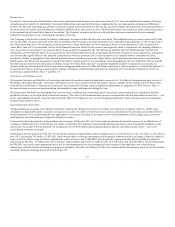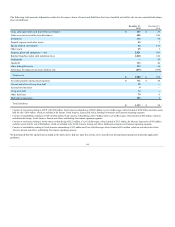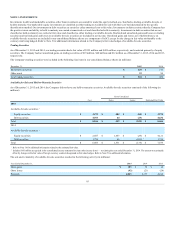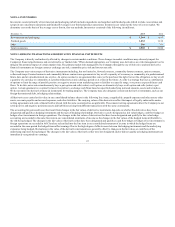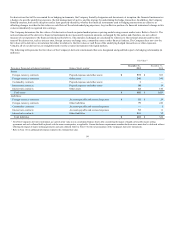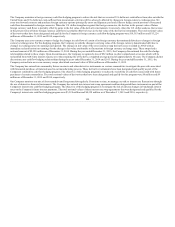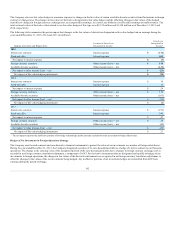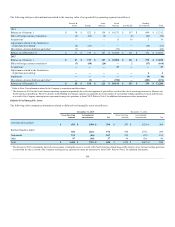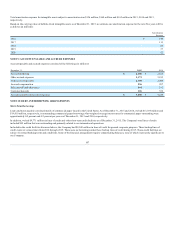Coca Cola 2015 Annual Report Download - page 99
Download and view the complete annual report
Please find page 99 of the 2015 Coca Cola annual report below. You can navigate through the pages in the report by either clicking on the pages listed below, or by using the keyword search tool below to find specific information within the annual report.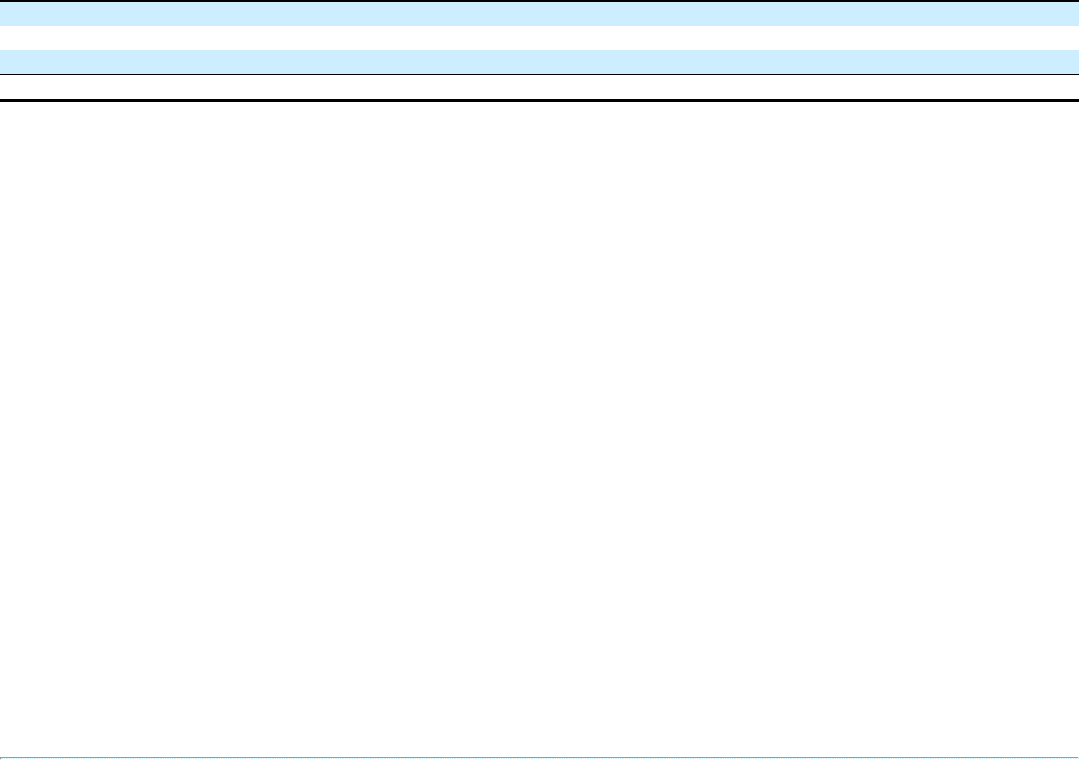
Inventories consist primarily of raw materials and packaging (which includes ingredients and supplies) and finished goods (which include concentrates and
syrups in our concentrate operations and finished beverages in our finished product operations). Inventories are valued at the lower of cost or market. We
determine cost on the basis of the average cost or first-in, first-out methods. Inventories consisted of the following (in millions):
December 31,
2014
Raw materials and packaging
$ 1,615
Finished goods
1,134
Other
351
Total inventories
$ 3,100
The Company is directly and indirectly affected by changes in certain market conditions. These changes in market conditions may adversely impact the
Company's financial performance and are referred to as "market risks." When deemed appropriate, our Company uses derivatives as a risk management tool to
mitigate the potential impact of certain market risks. The primary market risks managed by the Company through the use of derivative and non-derivative
financial instruments are foreign currency exchange rate risk, commodity price risk and interest rate risk.
The Company uses various types of derivative instruments including, but not limited to, forward contracts, commodity futures contracts, option contracts,
collars and swaps. Forward contracts and commodity futures contracts are agreements to buy or sell a quantity of a currency or commodity at a predetermined
future date, and at a predetermined rate or price. An option contract is an agreement that conveys the purchaser the right, but not the obligation, to buy or sell
a quantity of a currency or commodity at a predetermined rate or price during a period or at a time in the future. A collar is a strategy that uses a combination
of options to limit the range of possible positive or negative returns on an underlying asset or liability to a specific range, or to protect expected future cash
flows. To do this, an investor simultaneously buys a put option and sells (writes) a call option, or alternatively buys a call option and sells (writes) a put
option. A swap agreement is a contract between two parties to exchange cash flows based on specified underlying notional amounts, assets and/or indices.
We do not enter into derivative financial instruments for trading purposes. The Company may also designate certain non-derivative instruments, such as our
foreign-denominated debt, in hedging relationships.
All derivatives are carried at fair value in our consolidated balance sheets in the following line items, as applicable: prepaid expenses and other assets; other
assets; accounts payable and accrued expenses; and other liabilities. The carrying values of the derivatives reflect the impact of legally enforceable master
netting agreements and cash collateral held or placed with the same counterparties, as applicable. These master netting agreements allow the Company to net
settle positive and negative positions (assets and liabilities) arising from different transactions with the same counterparty.
The accounting for gains and losses that result from changes in the fair values of derivative instruments depends on whether the derivatives have been
designated and qualify as hedging instruments and the type of hedging relationships. Derivatives can be designated as fair value hedges, cash flow hedges or
hedges of net investments in foreign operations. The changes in the fair values of derivatives that have been designated and qualify for fair value hedge
accounting are recorded in the same line item in our consolidated statements of income as the changes in the fair values of the hedged items attributable to
the risk being hedged. The changes in the fair values of derivatives that have been designated and qualify as cash flow hedges or hedges of net investments in
foreign operations are recorded in AOCI and are reclassified into the line item in our consolidated statement of income in which the hedged items are
recorded in the same period the hedged items affect earnings. Due to the high degree of effectiveness between the hedging instruments and the underlying
exposures being hedged, fluctuations in the value of the derivative instruments are generally offset by changes in the fair values or cash flows of the
underlying exposures being hedged. The changes in the fair values of derivatives that were not designated and/or did not qualify as hedging instruments are
immediately recognized into earnings.
97


